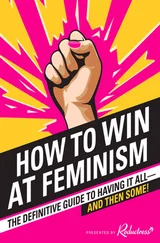If it wasn’t a supernova, then what was it? Another bright astronomical event is a conjunction, when two planets pass near each other in the sky. Jupiter and Venus are both astonishingly bright, and when they pass very close to each other would make a spectacular scene. And they can also both be in the east!
Were there any conjunctions like that around that time?
In fact, there were. Recently, an astronomer, using computer programs to map the positions of the planets in the sky, discovered that in 2 BC Venus and Jupiter passed very close to each other; so close in fact that to the eye they would have appeared as a single star! So have we found the Star?
Not so fast. First off, the planets move relative to each other, so even two days earlier or later they would’ve been seen as two separate objects. The wise men would never have mistaken that for a single star.
And oh, did I mention this apparition occurred in June? The wise men certainly took their time getting to Bethlehem!
Okay, so a planetary alignment doesn’t fit our Biblical bill either. And you can keep looking for other objects that might represent what the wise men are claimed to have seen, but at some point I think you have to realise that you’re grasping at cosmic straws. No real cosmic event matches the description in the Bible well enough to inspire the story.
And yet, people keep looking. In December every year, without fail, some newspaper article breathlessly reports some astronomer has found another candidate for the Star, yet another as-it-turns-out weak explanation for a Biblical passage of dubious reality.
And every year I read these articles and wonder, why do they try so? What are these people really searching for?
In 1992, as I could just start to spy the PhD lurking murkily at the end of my graduate career, I started dating Marcella. Two years later I had my degree and a job, and the next year Marcella and I were married. After a decade or more of no real religious involvement, I found myself with a Catholic family, one that really celebrated Christmas every year. Food, the tree, midnight mass, reading ‘The Night Before Christmas’, and yes (sigh), singing the dreaded carols. A year after Marcella and I married, our daughter was born, and that cemented the celebrations; in my family Christmas is absolutely for kids.
Now, it’s not like I jumped right into this. Thirty years of secular winters is more than just a habit. At first I was reluctant to participate much. And in some ways this new rekindling reawakened the reasons I didn’t like it all those years before.
But then something funny happened: one year, I decided I liked the tree.
It was cool. I had a tree in my house. Pine trees smell good. They’re pretty. Hanging ornaments and lights, if done properly, is actually rather festive. And I found I liked going out and physically getting the tree. We even once went to a huge farm where trees were grown specifically for the purpose, and I cut one down for us using a bow saw and everything. It was very macho.
Ironically, my wife—raised with this holiday—prefers fake trees. But maybe that’s because she always winds up doing the decorating (I’m hopeless at it, and likely to set fire to something) and it takes her all day. However, I won’t stand for an ersatz tree. Every year we get a real tree and let it make our house smell piney and arboreal.
And, yes, Christmassy.
Now, after many years of celebrating this holiday, I’ve come to really enjoy it. I know my in-laws well enough to know what kinds of gifts to get, and my own daughter makes it clear what she wants (somehow, the video games we get for her are always the kind Marcella wants to play). I always get the same sort of gift from them: a big Toblerone bar (400 grams!), thermal socks (my office is cold even in the summer) and various computer doodads and gizmos.
And every year I’m happy. I mean, honestly happy. Some people say the gifts are not the reason for the holiday, but they’re wrong: of course it’s about the gifts. They’re the centre-piece of the holiday; it’s about giving them, and having fun getting them, and then playing with them (or wearing or eating them) afterwards. And not to be all TV Christmas special here, but it’s about being with family while you’re doing all that.
So here I sit. An atheist, a skeptic, a guy raised Jewish who hated Christmas has found the meaning of the holiday, and he wasn’t even searching for it.
And every year, when I read the blogs, the papers, and watch the news, I see that same story of the Christmas Star resurrected, an undead story that won’t stay down. And people keep looking for the evidence.
But they won’t find it. They can’t. It’s just a story.
So for me, just being with family, enjoying their company: it’s enough. And, of course, every winter I still go outside to observe the sky and look at the stars, the real stars. You don’t need to search for them—they’re there, festooned across the sky for everyone to see.
The Ironed Trouser: Why 93% of Scientists Are Atheists (Depending on Who You Ask)
ADAM RUTHERFORD
Atheism and science should make good, comfortable, spooning bedfellows. Even though they are totally separate types of thing, the former being a position, the latter a process, the casual assumption is that they should skip hand in hand through gloriously evolved fields of reason. Those who oppose either or both like to conflate the two for a convenient jab-swing combo to pulverise rational thought in favour of religious fervour. Science must be bad because it lies so comfortably with godlessness.
The term ‘scientific atheism’ is tossed around sometimes, but I don’t really understand what it means. Atheism exists fully independently of science. As the onus is on the faithful to demonstrate the existence of Yahweh, Allah, Thor, Hanuman or whoever, atheists need to do nothing at all to be devoted to their stance. ‘Scientific atheism’ is equivalent to saying ‘ironed trousers’. Like science, ironing is a process, which can be applied to all manner of items: dresses, shirts, even underpants, if one were so inclined. It straightens things out, makes them fit together nicely. Fortunately, trousers exist and function perfectly adequately without ironing. And atheism exists without back up from science. But it does make it look a bit smarter.
In the twentieth century, there were several attempts to quantify the overlap of eggheads who were godheads. In 1916, psychologist James Leuba found that out of 1,000 scientists, 60% were agnostic or atheist. Eighty years later, the experiment was repeated, and the results were virtually identical. Within a different sample, only 7% of the members of the American National Academy of Sciences indicated a belief in God. More recently, a survey of the fellows at the UK’s most august scientific body, the Royal Society, revealed only 3.3% who believed in God.
As with so many surveys, it depends on who you ask, and how you phrase the question. Is the Royal Society a representative sample of scientists? Oh Lord, Mary Mother of Jesus, heavens to Betsy, Christ on a bicycle, no. How so no? For starters, only 5% of Royal Society fellows are women, something like ten times lower than in the general scientific community. A recent survey *indicated that Royal Society fellows are 38% grumpier than other scientists. Many fellows are so old it’s difficult to ascertain if they are even alive, let alone God-fearing. It is possible that this gives them an inside track on the big answer, but one would have to untimely wrest them from their peace to find out.
But what is clear is that those of a science bent are more likely to also lack religious faith. Why should this be? Because the process by which scientific knowledge is revealed is one that requires logic and rational thought at every stage. Any researcher will tell you that there are plenty of moments that necessitate creative guesswork, or simply having a wild stab in the dark, but in general these moments are massively outnumbered by the grinding out of small incremental steps towards better theories. Science as a way of acquiring knowledge certainly predisposes one towards ruling out the inconsistencies and irrationality inherent in religion.
Читать дальше












